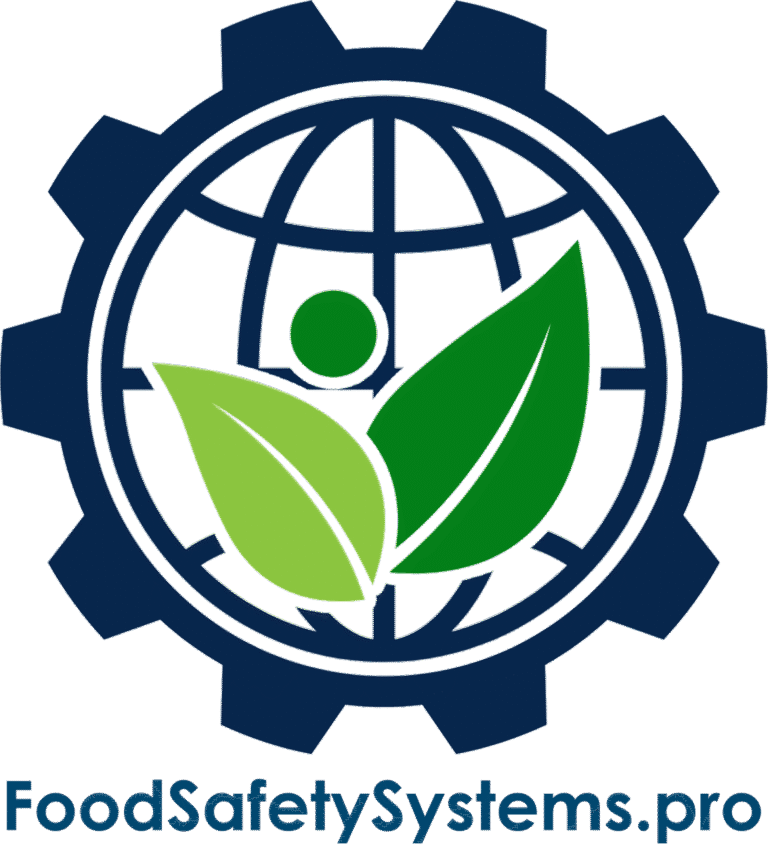Monitoring Key Performance Indicators (KPIs) for Food Safety Performance
Aligned with SQF Code Edition 9 – System Element 2.11.2
Requirement Overview
Under SQF Code Edition 9, Section 2.11.2 outlines the requirement for:
“Key performance indicators (KPIs) for monitoring the effectiveness of food safety and quality system performance shall be developed, documented, and implemented.”
This article supports facilities aligning with recognized food safety certification standards, such as those from the Safe Quality Food Institute (SQFI).

Objectives of KPI Compliance
-
✓ Identify measurable indicators of food safety effectiveness
✓ Set clear, realistic performance targets
✓ Routinely monitor, analyze, and act on KPI data
✓ Drive improvement through evidence-based decision-making
Step-by-Step KPI Implementation Guide
1. Define KPIs Relevant to Your Operation
-
Examples include:
-
• CCP/OPRP compliance rates
• Non-conformance trends (e.g., allergen deviations)
• Microbial testing pass/fail percentages
• Customer complaints and CARs
• Internal/external audit scores
Evidence to Maintain:
-
• KPI list with definitions and units of measure
• KPI owners and data sources
- • CCP/OPRP compliance rates • Non-conformance trends (e.g., allergen deviations) • Microbial testing pass/fail percentages • Customer complaints and CARs • Internal/external audit scores
- • KPI list with definitions and units of measure • KPI owners and data sources
2. Establish Performance Targets and Review Frequency
-
Tips for Success:
-
• Use internal benchmarks and historical performance
• Collaborate with cross-departmental teams
• Set escalation thresholds for when targets are not met
Evidence to Maintain:
-
• Documented targets
• Review schedule with assigned accountability
- • Use internal benchmarks and historical performance • Collaborate with cross-departmental teams • Set escalation thresholds for when targets are not met
- • Documented targets • Review schedule with assigned accountability
3. Monitor and Analyze KPI Data
-
Best Practices:
-
• Collect data routinely via logs, software, or dashboards
• Use statistical tools to analyze trends
• Investigate anomalies using root cause analysis
Evidence to Maintain:
-
• Data logs and dashboards
• KPI reports with trend analysis
- • Collect data routinely via logs, software, or dashboards • Use statistical tools to analyze trends • Investigate anomalies using root cause analysis
- • Data logs and dashboards • KPI reports with trend analysis
4. Report Performance and Take Corrective Action
-
Expected Practices:
-
• Present KPIs in management reviews
• Highlight areas underperforming
• Link KPI failures to improvement plans or CARs
Evidence to Maintain:
-
• Management meeting minutes
• Corrective Action Plans (CAPAs)
• Monthly or quarterly KPI summaries
- • Present KPIs in management reviews • Highlight areas underperforming • Link KPI failures to improvement plans or CARs
- • Management meeting minutes • Corrective Action Plans (CAPAs) • Monthly or quarterly KPI summaries
5. Revalidate and Update KPIs Annually
-
For continuous improvement:
-
• Reassess each KPI’s relevance
• Remove ineffective indicators and introduce new ones
• Align updates with evolving regulatory or operational needs
Evidence to Maintain:
-
• Annual KPI review log
• Updated KPI registry and targets
- • Reassess each KPI’s relevance • Remove ineffective indicators and introduce new ones • Align updates with evolving regulatory or operational needs
- • Annual KPI review log • Updated KPI registry and targets
Common Non-Conformance Issues & Solutions
Finding
Corrective Strategy
No KPI system implemented
Establish KPI list and define responsibilities
Targets not documented
Use benchmarking or past data to set thresholds
Trend analysis not conducted
Introduce visual dashboards or statistical tools
No follow-up actions documented
Integrate KPI results into CAR/CAPA workflows
| Finding | Corrective Strategy |
|---|---|
| No KPI system implemented | Establish KPI list and define responsibilities |
| Targets not documented | Use benchmarking or past data to set thresholds |
| Trend analysis not conducted | Introduce visual dashboards or statistical tools |
| No follow-up actions documented | Integrate KPI results into CAR/CAPA workflows |
What Auditors Look For?
-
• RDocumented KPIs linked to food safety performance
• Defined targets and responsibilities
• Trend analyses and corrective actions
• Discussion of KPIs in annual or periodic reviews
Implementation Roadmap
Build Your Program
-
✓ Identify KPIs aligned with food safety and quality goals
✓ Define each KPI's target, scope, and review frequency
Train and Validate
-
✓ Train staff on tracking, documentation, and trend analysis
✓ Create data visualization tools or logs
Operate and Monitor
-
✓ Record KPI data consistently
✓ Conduct trend reviews monthly or quarterly
Improve Continuously
-
✓ Adjust underperforming areas
✓ Revise KPIs annually for better system alignment
Why This Matters?
Monitoring food safety KPIs helps your facility:
-
✓ Demonstrate compliance with GFSI-recognized schemes
✓ Build accountability and transparency in your system
✓ Identify problems before they escalate
✓ Support data-driven improvements and audit preparedness
Need Help Implementing Food Safety KPIs?
At Food Safety Systems, we help food manufacturers, processors, and distributors develop robust KPI programs that align with global food safety requirements and certification schemes.
-
✓ Editable KPI tracking dashboards
✓ Industry benchmarking templates
✓ Sample audit-ready scorecards
Privacy Policy | Terms of Service | Disclaimer
Powered by Consultare Inc. Group, A Compliance Company







